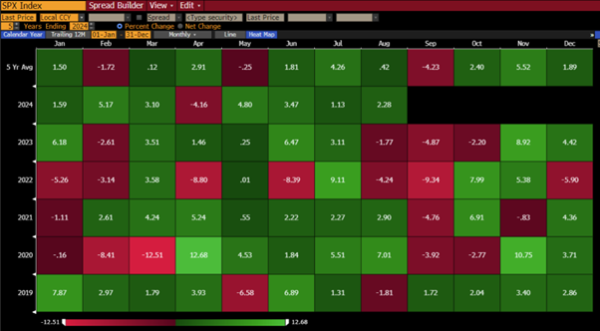Market Thoughts – Tuesday 3rd September – The Week Starts Now
Where We Stand – As expected, a quiet start to the trading week yesterday, with several markets closed for Labor Day, and those markets which were open experiencing substantially lighter than usual volumes, and much thinner liquidity.
This was particularly true of the FX space, where the JPY decided to take a peculiar-looking meander to the downside, with USD/JPY briefly trading north of the 147 figure. Flows are the obvious, if somewhat clichéd, narrative to which one can point here, though there was certainly no obvious news- or data-flow to drive such a move.
Some notable softness has fed through in both the AUD and the NZD overnight, the former sinking to the bottom of the G10 leaderboard, though catalysts have remained somewhat thin on the ground. Pinning the move on the 3% decline in iron ore prices may be logical, but feels a bit of a stretch given how loose that particular correlation has been of late.
The week, and the month, ‘proper’ very much feel as if they get underway today. Of course, plenty has been made of September being, on average, the worst month of the year for the S&P 500 over the last 5 years, with the benchmark’s last green September having come all the way back in 2019. Clearly, seasonals are not a trading signal in their own right, though some may question whether a 5th straight negative September could be on the cards.
 Preview
PreviewI’d argue against this view, particularly amid continued strong economic and earnings growth – with the latter having risen by 10.9% YoY in Q2, the fastest annual growth rate since the tail end of 2021.
The Fed are, of course, in the mix here as well, though the debate between a 25bp or a 50bp cut at the September meeting feels a little academic. All year, equities have been propelled higher not by what the Fed are likely to do, but by what the Fed can do if they see a need to step in. In other words, participants are happy to reside further out the risk curve, buying into any equity dips in rapid fashion, safe in the knowledge that the FOMC has 525bp of room to lower the fed funds rate, plus ample space to resume QE, if required. This is the very essence of the ‘Fed put’, which of course was strengthened by Chair Powell at Jackson Hole, with the resolute remarks that policymakers neither “seek or welcome” further labour market cooling.
Of course, the daily gyrations in market pricing, both for the next FOMC decision, and further out the curve, will cause knee-jerk equity vol, and plenty of excitement for both FX and FI operators.
This intraday noise, however, should not detract from the two over-arching themes that persist – markets continue to price an overly-aggressive pace of easing; and, that the medium-term path of least resistance should continue to lead higher for equities, so long as the FOMC retain an easing bias.
Look Ahead – August’s US ISM manufacturing PMI print stands as today’s data highlight, with the index set to tick modestly higher to 47.5, from 46.8 in July. While such a print would continue to imply contraction in the sector, it would represent the first MoM increase in the ISM manufacturing gauge since March, perhaps a sign that the recent contraction is bottoming out.
Elsewhere, today, Swiss CPI figures are set to show inflation having continued to linger towards the bottom of the SNB’s target band, likely validating expectations for another 25bp SNB cut at the tail end of the month, and a further such reduction before the year is out. Participants will also hear from BoE Deputy Governor Breeden, and the ECB’s Nagel, today, though neither seems likely to add anything significant in terms of the policy outlook.